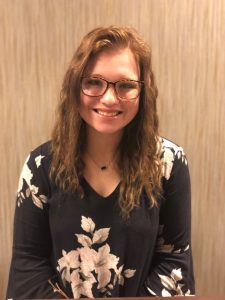 ACT recently hosted a convening, which gathered together several postsecondary institutions who are participating in the U.S. Department of Education’s Pell Grants Dual Enrollment Experimental Sites initiative. This multi-year initiative allows a selection number of postsecondary institutions to award Pell Grants to low-income, high school students in dual enrollment programs. ACT, along with economists from Stanford University, is conducting the evaluation of this one-of-its-kind initiative. The hope is that, if there are positive outcomes, it could be an important resource for families. We interviewed two students about their experiences with the program and asked for their thoughts, below is our first student’s story.
ACT recently hosted a convening, which gathered together several postsecondary institutions who are participating in the U.S. Department of Education’s Pell Grants Dual Enrollment Experimental Sites initiative. This multi-year initiative allows a selection number of postsecondary institutions to award Pell Grants to low-income, high school students in dual enrollment programs. ACT, along with economists from Stanford University, is conducting the evaluation of this one-of-its-kind initiative. The hope is that, if there are positive outcomes, it could be an important resource for families. We interviewed two students about their experiences with the program and asked for their thoughts, below is our first student’s story.
How did you hear about dual enrollment?
I heard about dual credit enrollment through both the announcements at my school, as well as from others attending my school who were enrolled in these classes. There were also Ranger College representatives who came to school and talked to students during lunch times about enrolling into dual credit.
Would you have enrolled in the dual enrollment course without receiving a federal Pell Grant?
I would have still enrolled in dual credit classes, though it would have been more difficult to be able to afford the classes I have taken and have yet to take. With the Pell Grant, I was able to pay for both my classes and books, as well as take multiple classes that I would not otherwise have taken, such as General Psychology and Biology.
Do you feel like you were academically ready for the course? What was the biggest adjustment?
Because Early High School offered both Advanced and AP classes, I felt that I was academically ready to take the next step into dual credit classes even though I was extremely nervous taking my first few classes. It was easy to catch on and take what I had learned in my advanced classes into what I was doing in my dual credit classes. Without these classes, it would have been a little bit harder to switch into dual credit, but it would still have been doable.
What would you tell your friends, siblings, and other students about dual enrollment courses?
I would say to definitely take advantage of dual credit courses. It is cheaper than taking classes in college. You also get some of the classes done so that you won’t have as many classes to take in college, so it is like getting a jump start on college. You also are taking classes that count as both high school and college credit, so it’s like killing two birds with one stone.
Had you heard of FAFSA prior to enrolling in your dual enrollment program and how it is used?
I had heard a little about the Free Application for Student Aid (FAFSA) prior to enrolling from others taking dual credit and applying for college. At first, it was a little confusing on what was happening when filling out FAFSA and applying for the Pell Grant, but with the help of the school counselor, my mom, and representatives from Ranger, we were able to fill out what was needed to apply to FAFSA and for the Pell Grant.
Ashtin Wade is a senior at Early High School in Early, Texas. She has taken 27 college hours as a dual credit student at Ranger College. Next year she will be attending Angelo State University to pursue a degree in counseling.
